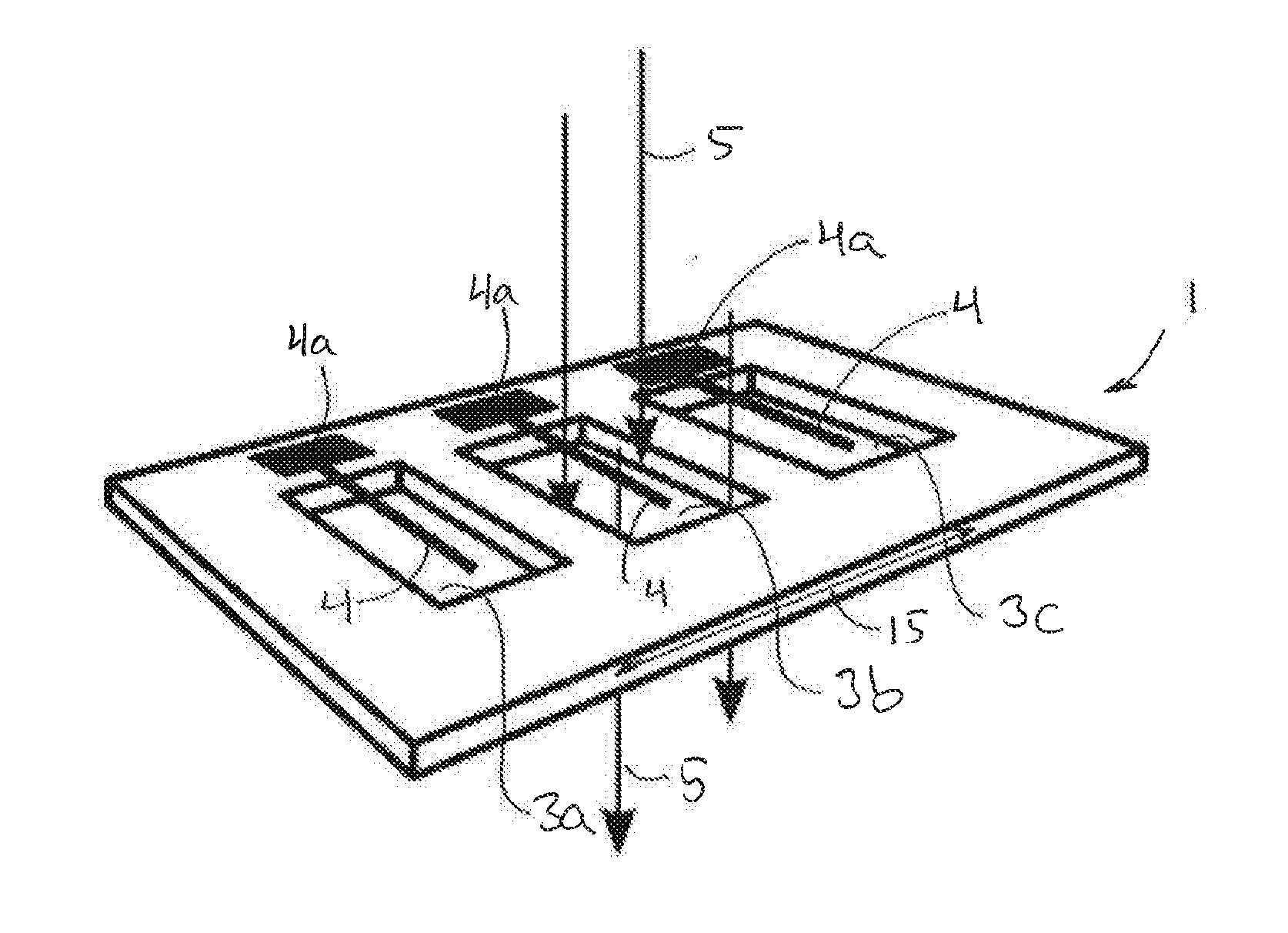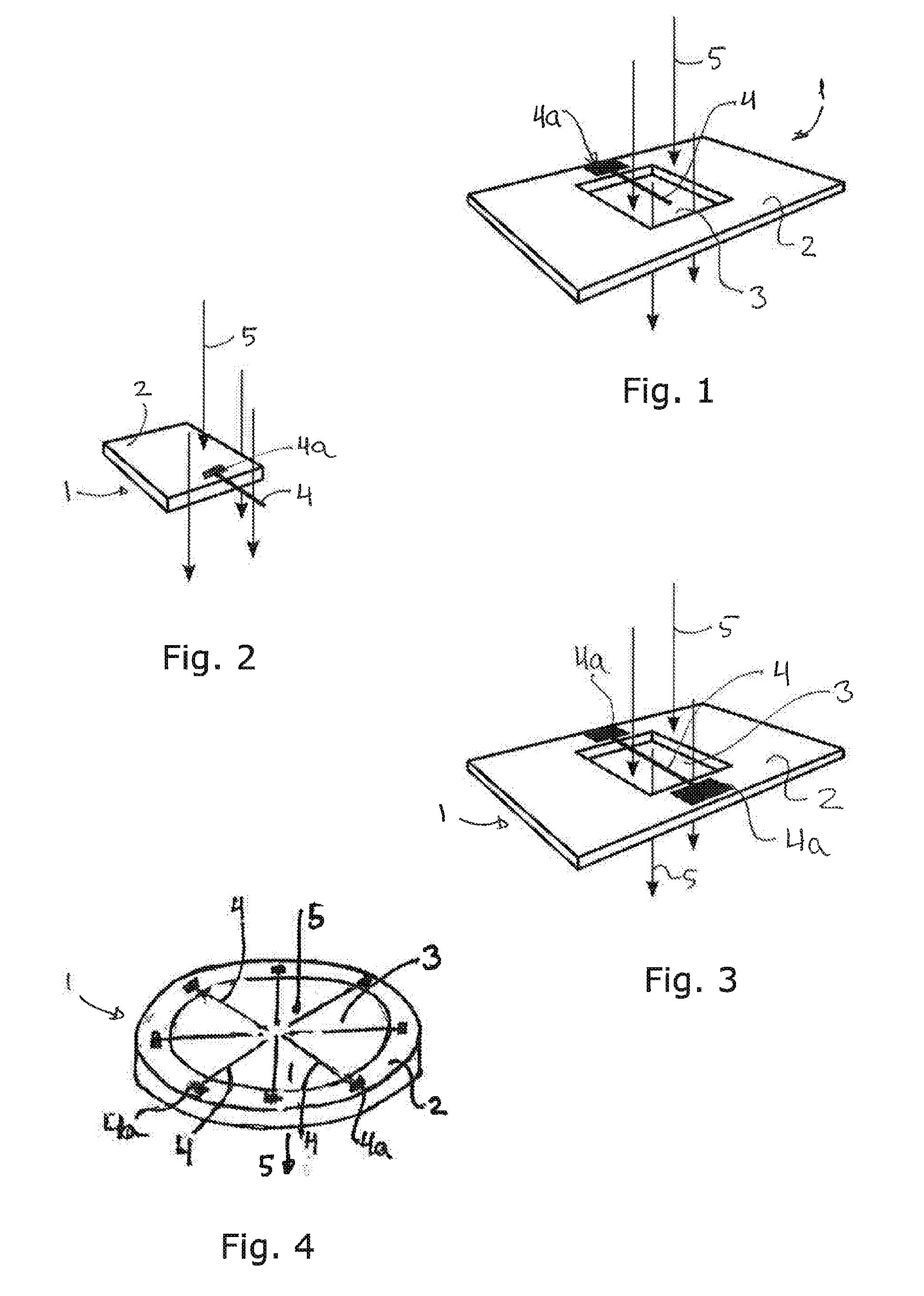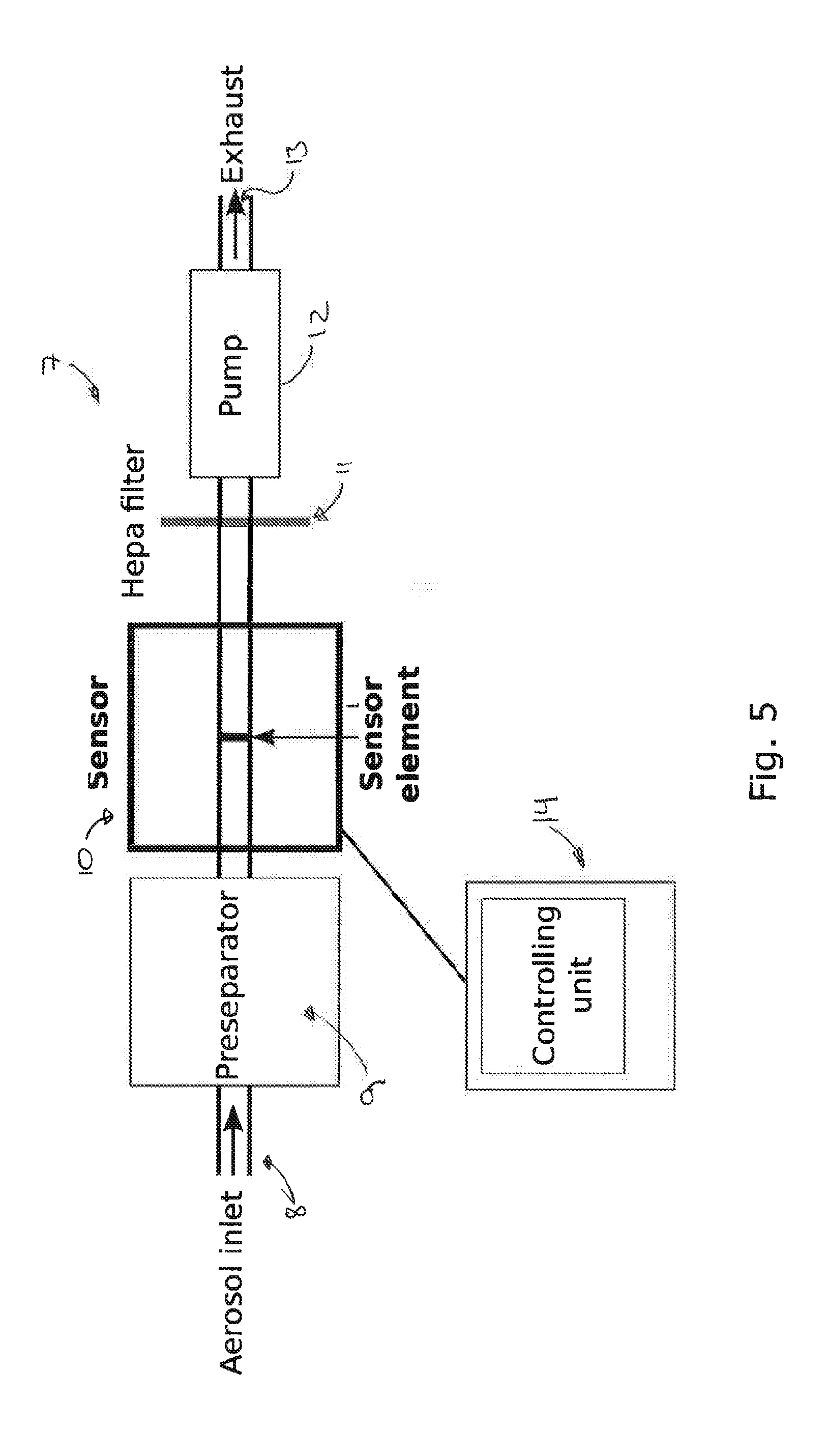Resonant fiber based aerosol particle sensor and method
a technology of aerosol particles and sensors, applied in the direction of material analysis using microwave means, weighing by absorbing components, and material analysis using sonic/ultrasonic/infrasonic waves. it can solve the problems of nano-sized particle weight determination, inability to use vacuum in combination with ion optics, and inability to manually arrange nano-sized particles on micro strings
- Summary
- Abstract
- Description
- Claims
- Application Information
AI Technical Summary
Benefits of technology
Problems solved by technology
Method used
Image
Examples
Embodiment Construction
[0058]FIG. 1 shows schematically a sensor element 1 according to a first embodiment of the invention. The sensor element 1 comprises a base member 2 having a square shaped penetration 3 forming a flow passage in the element 1. It is noted that the penetration may have other shapes than square shaped. An elongate member 4 is attached to the base member 2 at one distal 4a and extends from the base member 2 at least partially over the penetration 3. Thus, the elongate member 4 extends in a straight manner out from the base member 2, so as not to extend along and above the surface of the base member 2. Thereby, an incoming flow of e.g. an aerosol is able to flow past the elongate member 4 without flowing towards the base member 2 which could otherwise induce strong curvature in the stream lines—e.g. like an impinging jet flow situation—which results in uneven deposition of particles on the elongate member 4.
[0059]In many of the embodiments of the invention, the base element 2—or in gene...
PUM
| Property | Measurement | Unit |
|---|---|---|
| velocity | aaaaa | aaaaa |
| velocity | aaaaa | aaaaa |
| velocity | aaaaa | aaaaa |
Abstract
Description
Claims
Application Information
 Login to View More
Login to View More - R&D
- Intellectual Property
- Life Sciences
- Materials
- Tech Scout
- Unparalleled Data Quality
- Higher Quality Content
- 60% Fewer Hallucinations
Browse by: Latest US Patents, China's latest patents, Technical Efficacy Thesaurus, Application Domain, Technology Topic, Popular Technical Reports.
© 2025 PatSnap. All rights reserved.Legal|Privacy policy|Modern Slavery Act Transparency Statement|Sitemap|About US| Contact US: help@patsnap.com



